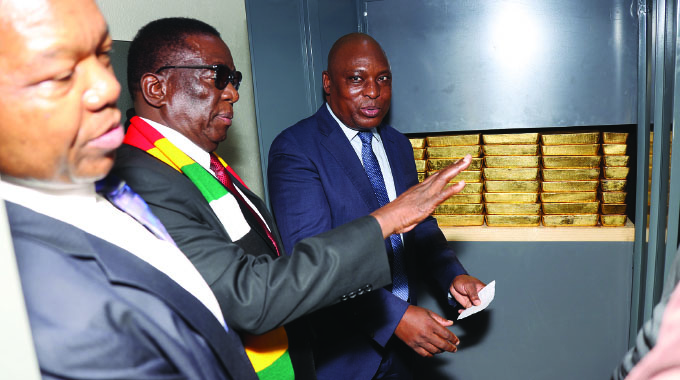By Ross Moyo
The Reserve Bank of Zimbabwe’s (RBZ) gold reserve strategy, aimed at backing its gold-based currency, the ZiG, remains far behind other African central banks despite recent efforts to bolster its holdings.
As of the first quarter of 2025, Zimbabwe holds just 3.4 metric tons of gold, a modest figure when compared to the continent’s leading gold reserve holders. By contrast, South Africa maintains 125.3 metric tons, while Algeria, Libya, and Egypt top the continental rankings with 173.56, 146.65, and 128.00 metric tons respectively, according to the latest data from the World Gold Council (WGC).
The RBZ launched the ZiG (Zimbabwe Gold) currency in April 2024 in an effort to restore monetary stability and reduce dependency on foreign currencies. The central bank has pledged to increase its gold holdings to 5 metric tons by the end of 2025. However, the scale of Zimbabwe’s reserves remains relatively low, raising questions about the long-term credibility and resilience of its gold-backed monetary policy.
Africa’s Gold Reserve Leaders: Q1 2025
Rank Country Gold Reserves (tonnes)
1 Algeria 173.56
2 Libya 146.65
3 Egypt 128.00
4 South Africa 125.30
5 Ghana 31.01
6 Mauritius 12.42
7 Tunisia 6.84
8 Zimbabwe 3.40
9 Kenya 0.02
Algeria, Libya, and Egypt have historically maintained robust gold reserves as a strategic hedge against currency fluctuations and economic shocks. Among sub-Saharan African countries, Ghana leads with 31.01 tonnes, reflecting its status as one of the continent’s top gold producers.
A Global Gold Resurgence
Gold has seen a resurgence in central bank strategies worldwide, driven by rising geopolitical tensions, inflation concerns, and economic uncertainty. In April 2025, gold prices surged past $3,500 per ounce, hitting historic highs as global investors sought safe-haven assets following renewed market volatility and political developments in the U.S.
A recent report by the European Central Bank revealed that central banks globally purchased over 1,000 tonnes of gold in 2024—more than double the average of the past decade. Total global gold reserves held by central banks climbed to 36,000 metric tons, nearing the all-time peak of 38,000 metric tons set six decades ago.
A World Gold Council (WGC) survey showed that two-thirds of central banks added gold to their reserves in 2024 to diversify portfolios, while roughly 20% cited geopolitical and economic risks, including conflicts like Russia’s invasion of Ukraine.
Africa’s Strategic Gold Push
Across Africa, several nations are aligning with this global trend. Countries such as South Sudan, Nigeria, and Zimbabwe are ramping up gold acquisitions as a means to strengthen monetary sovereignty and reduce reliance on foreign currencies like the U.S. dollar.
Despite these efforts, Zimbabwe’s gold reserves remain among the lowest of major African economies, especially when contrasted with its vocal campaign to back its currency with bullion. While the RBZ insists its strategy is a step toward long-term financial stability, experts suggest that meaningful confidence in the ZiG will require much more substantial gold backing.
“Gold is a key asset for central banks—valued for its liquidity, stability, and ability to shield against economic shocks,” the WGC said in its Q1 report. “It plays a vital role in building financial credibility.”
With 2025 shaping up to be a pivotal year for global and African monetary policy, the spotlight remains on how Zimbabwe—and others—will navigate the balance between ambition and reality in gold-backed currency strategies.














Comments